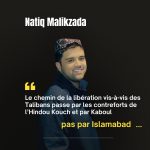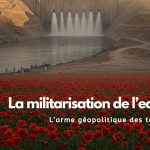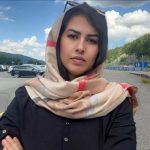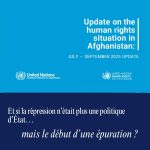Trump reçoit les dirigeants d’Asie centrale pour un sommet de haut niveau consacré à la diplomatie minière.
Reid Standish05/11/2025

Écouter
8 min
Ce fichier audio est généré par IA.
Résumé
- Le président américain Donald Trump accueillera les dirigeants d’Asie centrale pour un sommet le 6 novembre, où les minéraux critiques et les terres rares seront un enjeu clé.
- L’Asie centrale, riche en ressources inexploitées, recherche des investissements américains pour contrebalancer l’influence de la Chine et de la Russie, selon les analystes.
- Le sommet de Washington abordera le traitement des minéraux, les routes commerciales, les partenariats stratégiques et d’autres questions dans le contexte de la domination de la Chine sur les terres rares.
Après avoir conclu une série d’ accords miniers ces dernières semaines avec l’Australie, la Malaisie, la Thaïlande et le Japon, le président américain Donald Trump va désormais se tourner vers l’Asie centrale, puisqu’il accueillera les dirigeants de la région à Washington pour un sommet de haut niveau le 6 novembre.
Les États d’Asie centrale sont connus pour leurs vastes ressources en pétrole et en gaz, mais la région possède également de riches réserves largement inexploitées de minéraux critiques et de terres rares – des éléments jugés vitaux pour la sécurité nationale des États-Unis.
Le Kazakhstan, le Kirghizistan, le Tadjikistan, le Turkménistan et l’Ouzbékistan devraient chercher à transformer leurs richesses minières en liens plus étroits avec les États-Unis, alors que la Maison Blanche cherche à nouer de nouveaux partenariats.
Lorgnant l’Asie centrale, Trump conclut des accords d’une valeur de 12 milliards de dollars avec le Kazakhstan et l’Ouzbékistan
« Les pays d’Asie centrale semblent bien placés grâce à leurs importants gisements et à leurs investissements croissants dans le Corridor central », a déclaré Joseph Epstein, directeur du Centre de recherche Turan de l’Institut Yorktown basé à Washington, à RFE/RL, faisant référence à la nouvelle route commerciale de 6 500 kilomètres reliant la Chine à l’Europe à travers l’Asie centrale et le Caucase en contournant la Russie.
The summit comes on the heels of Trump’s mineral diplomacy across the Asia-Pacific and the US president’s meeting with Chinese leader Xi Jinping amid a trade war fueled in part by Beijing’s export restrictions over strategically vital rare earth elements.
China maintains a powerful gripon global supply chains for the elements, commanding more than 70 percent of global rare-earth mining, 90 percent of their separation and processing, and 93 percent of magnet manufacturing.
After Xi agreedto a one-year pause on some of those restrictions following his meeting with Trump, Washington is now looking to work toward breaking China’s near monopoly.
Experts say Central Asia is a complementary fit, with the region’s governments seeking US investment to counterbalance Chinese and Russian influence and avoid becoming overly dependent on their two neighbors.
« Both Beijing and Washington are set to use the pause to create an advantage from their side to have more leverage in the next round of trade tensions, » Epstein said. « That makes the United States even more of a counterweight as the Central Asians look to preserve their multi-vector foreign policies. »
What’s On The Agenda In Washington?
Few issues have shaped the White House’s agenda since Trump returned to office in January more than critical minerals, a group of roughly 50 mineral commodities that the US Geological Survey has deemed critical to the country’s national and economic security. Among those commodities are rare earths, 17 elements used in everything from wind turbines to smartphones to fighter jet engines.
« This has the potential to be a new way for Central Asian leaders to improve their domestic economic outlooks and get a rapid influx of foreign direct investment, » Eldaniz Gusseinov, head of research at Nightingale Intelligence, a political foresight firm, told RFE/RL.
From Ukraine To Central Asia, The Broad Impact Of China’s Latest Rare Earth Restrictions
Beyond the region’s mineral wealth, the gathering will alsocover energy logistics, infrastructure investments, technology transfer from the United States to the region, educational exchanges, and water-resource management.
The autocratic former Soviet republics of Central Asia have been accused of committing widespread human rights abuses for years. But the issue is not expected to feature prominently, prompting some advocacy groups to voice concerns.
« The Central Asia-US summit should ensure human rights is a key part of the agenda, especially as repression increases across Central Asia, » Hugh Williamson, Europe and Central Asia director at Human Rights Watch, said in a statement. « Participating countries should recognize that they risk recent social and economic progress if international partners seek stable environments elsewhere for engagement and investment. »
Launched in 2015 with a foreign ministers’ summit attended by then-US Secretary of State John Kerry, the C5+1 summit — the official name for the format grouping the United States with the five Central Asian states — has been the predominant venue for Washington’s high-level engagement with the region.
This year’s summit marks only the second time the gathering will take place at the presidential level, and the region is looking to capitalize.
Kazakhstan is expected to press for a pledge from the Trump administration to work with the Republican-controlled Congress to repeal Jackson-Vanik trade restrictions, a Cold War-era law that imposes trade barriers on countries with nonmarket economies that restrict emigration.
EU Readies New Trade Routes — And A Challenge To Beijing And Moscow — At Luxembourg Summit
Ahead of the summit, the White House is also in talks over access to one of the world’s largest untapped deposits of tungsten — a metal used by the Pentagon to make ammunition, projectiles, and other weaponry — that is in Kazakhstan.
Accordingto Bloomberg, US Commerce Secretary Howard Lutnick has brokered talks between US company Cove Kaz Capital Group LLC and Kazakhstan’s sovereign wealth fund about a bid to develop two massive deposits in the Central Asian country.
What Does Central Asia Want From The Trump Administration?
Central Asian leaders appear to recognizethe opportunity before them. Uzbek President Shavkat Mirziyoyev has unveiled plans to develop rare earth metals projects worth $500 million. Kazakh President Qasym-Zhomart Toqaev told parliament this year that rare earths have become the « new oil » and developing them is a « priority task. »
But much of the region’s deposits remain unexplored and untapped and, in some cases, still rely on geological surveys conducted during the Soviet era.
Russia’s Ban On Energy Exports Exposes Central Asia’s Dependence On Moscow
For instance, Kazakhstan announced in April that it discovered massive deposits of more than 20 million metric tons of rare earths. The claim is still being confirmed by international firms, but if proven it would give the Central Asian country the world’s third-largest reserves of rare earth metals, behind only China and Brazil.
William Courtney, ancien ambassadeur des États-Unis au Kazakhstan et chercheur associé principal à la Rand Corporation, a déclaré à RFE/RL que les gouvernements d’Asie centrale cherchent à développer leur coopération avec les États-Unis dans les domaines de la prospection, de l’exploitation minière et de l’exportation des terres rares et autres minéraux critiques, mais recherchent particulièrement des investissements dans leur traitement.
Dans le cas des terres rares, la Chine détient un quasi-monopole sur la transformation de ces métaux, en partie grâce à des investissements constants depuis des décennies et à une réglementation laxiste qui tolère l’impact environnemental très polluant de leur transformation.
« C’est le monopole chinois sur la transformation qui importe plus que l’approvisionnement », a déclaré Courtney à RFE/RL. « Par conséquent, si les États-Unis veulent être compétitifs, ils doivent trouver d’autres pays, moins soumis à des réglementations environnementales strictes, qui soient disposés à accueillir des activités. »
De nombreux pays d’Asie centrale ont déjà adapté leur législation pour attirer les sociétés minières, mais attirer davantage d’investissements américains dans le secteur nécessitera également d’abaisser les barrières à l’entrée pour les capitaux étrangers sur le marché – un point qui figure à l’ordre du jour du sommet.
La Chine poursuit son expansion régulière en Asie centrale en marge des grands sommets.
Cela s’inscrit également dans un autre objectif des dirigeants de la région : attirer davantage d’investissements dans les axes logistiques.
Le Corridor central, officiellement appelé Corridor de transport transcaspien, serait la principale voie de transport des richesses minières de la région.
Cette route a déjà attiré des investissements d’Europe, de Chine et des pays arabes du Golfe, et les dirigeants d’Asie centrale espèrent que l’intérêt de Washington pour les ressources minières de la région attirera des investissements supplémentaires.
« Cette priorité accordée aux minéraux et à leur transformation contribue également à justifier et à développer le Corridor central », a déclaré Gusseinov.
- Reid StandishReid Standish est correspondant de RFE/RL pour les affaires internationales liées à la Chine, basé à Prague, et auteur de la note d’information « La Chine en Eurasie » . Spécialisé dans la politique étrangère chinoise en Europe de l’Est et en Asie centrale, il a notamment couvert l’initiative chinoise des Nouvelles Routes de la Soie et les camps d’internement de Pékin au Xinjiang. Avant de rejoindre RFE/RL, Reid était rédacteur au magazine Foreign Policy et son correspondant à Moscou. Il a également collaboré avec The Atlantic et The Washington Post.StandishR@rferl.org SUIVRE










Comments are closed